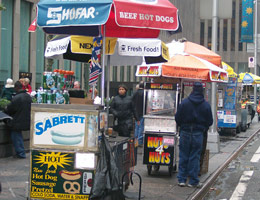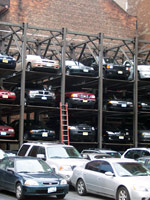Post-it City
This term was coined by Giovanni la Varra to describe a type of public space that is an alternative to the traditional official public space. These spaces are informal ones where the most varied activities take place: Street vending, rave parties, botellones (street drinking), etc. The Post-it city is a functional urban space where citizens develop specific non-conventional ways of relating. By definition it is a complex and heterogeneous space, as corresponds to the multiple logics that govern the contemporary city.

 The Post-it space is in the first place a non-codified one where any type of encounter, exchange, or behavior is possible. It is a case of empty places, residual spaces, places forgotten by the town planning process and which are located on the edges of the main lines of communication of the city. The Post-it space is secondly a temporary space. In it activities unfold at certain times of the day or night. During the rest of the time, no indication of them remains within it. Thirdly, the Post-it space is an intensified space, a no-man's land that is available for all kinds of collective practices.
The Post-it space is in the first place a non-codified one where any type of encounter, exchange, or behavior is possible. It is a case of empty places, residual spaces, places forgotten by the town planning process and which are located on the edges of the main lines of communication of the city. The Post-it space is secondly a temporary space. In it activities unfold at certain times of the day or night. During the rest of the time, no indication of them remains within it. Thirdly, the Post-it space is an intensified space, a no-man's land that is available for all kinds of collective practices.
The Post-it city is a criticism of the design of contemporary public spaces in Europe, spaces that are more and more formalized, financed, and sophisticated, spaces that are less and less spontaneous and real. La Varra proposes resisting the standardization of public behavior that the "official" European public space induces.